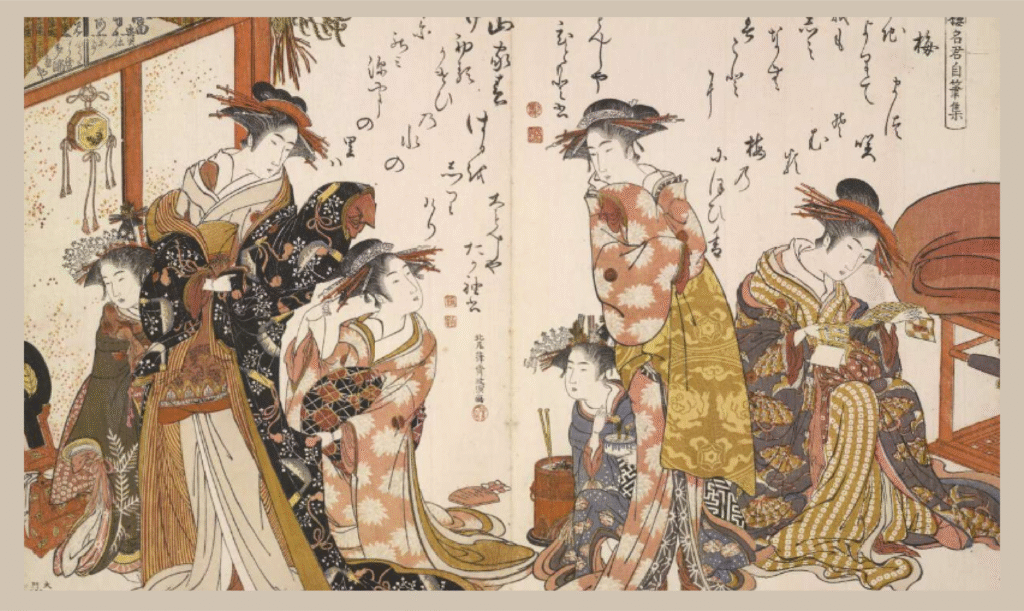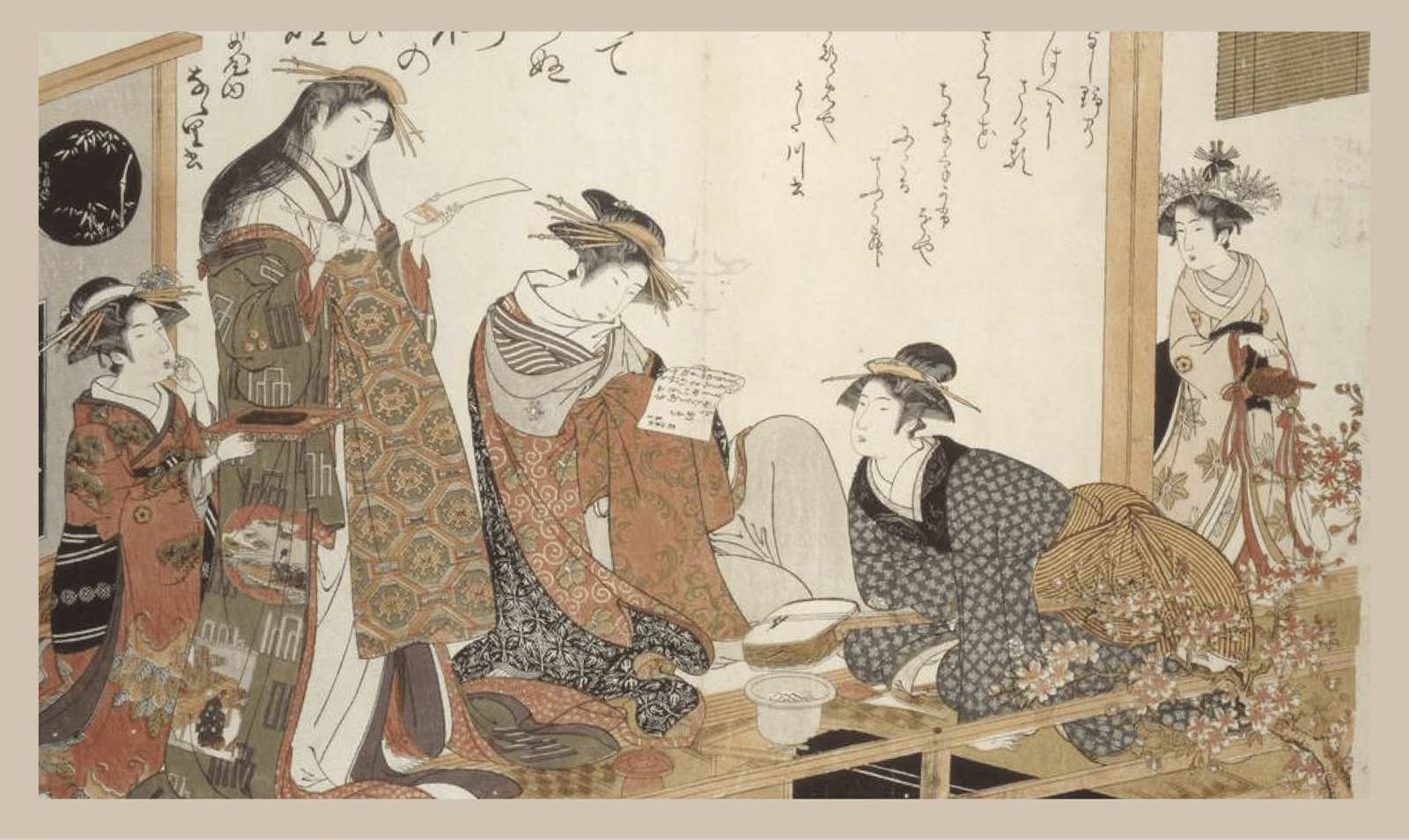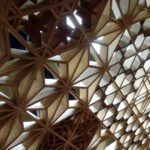When you picture Japan’s cultural heritage, the elegant silhouette of a kimono likely comes to mind. But the kimono (着物)—literally meaning “thing to wear”—is far more than just clothing. Especially during the Edo period (1603–1868), the kimono became a canvas of personal identity, artistic innovation, and intricate symbolism.
In this article, we explore the hidden language behind Edo-period kimono patterns, the trends that shaped fashion, and the enduring legacy of this fascinating art form.
A Brief History of Kimono in the Edo Period
During the Edo period, Japan enjoyed over two centuries of peace under the Tokugawa shogunate. With economic prosperity came the flourishing of merchant classes (chōnin), who sought to express themselves through clothing despite rigid social hierarchies.
The kimono evolved from the kosode (a simple short-sleeved robe) into a highly sophisticated garment. Every choice—from the cut to the pattern to the color—was a reflection of the wearer’s age, marital status, season, profession, and even philosophical leanings.
While samurai were expected to dress conservatively, merchants and artisans—ironically considered lower in status—pushed the boundaries of fashion, often within cleverly encoded forms.
The Language of Patterns: More Than Meets the Eye
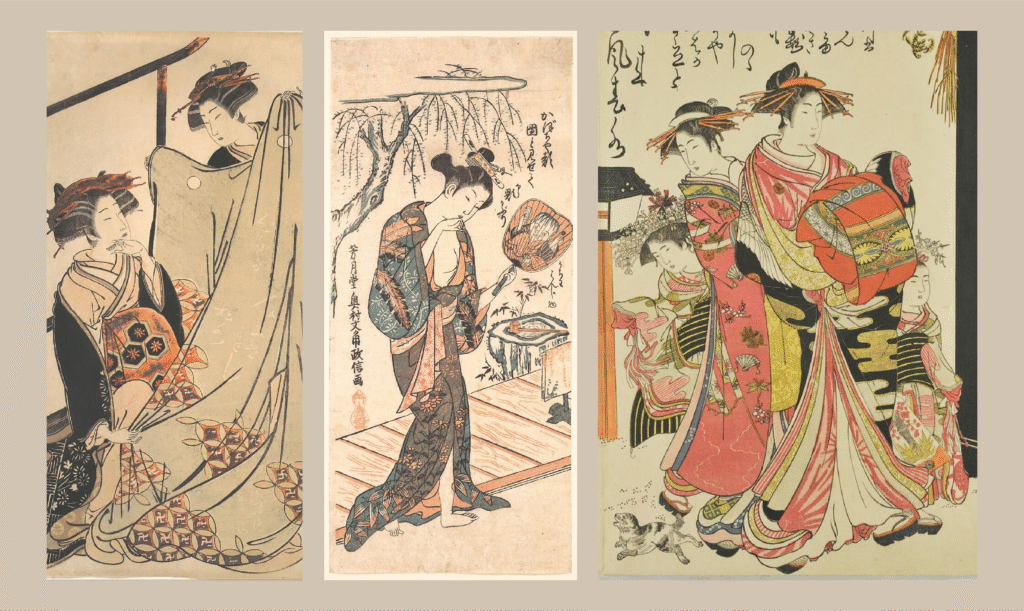
In Edo-period Japan, kimono patterns (文様, mon’yō) were not mere decoration. Each motif carried specific meanings, often rooted in nature, folklore, or auspicious symbolism.
Here are some commonly used kimono patterns and their hidden messages:
- Seigaiha (青海波): “Blue Ocean Waves”
- Represents peace, prosperity, and the promise of good fortune over generations.
- Popular for bridal kimonos and celebratory occasions.
- Kikkō (亀甲): “Tortoiseshell Hexagon”
- A symbol of longevity and stability, inspired by the hard shell of turtles.
- Often incorporated into formal wear or armor-like motifs for samurai families.
- Ume (梅): “Plum Blossoms”
- Signifies resilience and hope, as plum trees bloom even in the harsh winter.
- Frequently worn in early spring ceremonies.
- Tsuru (鶴): “Cranes”
- Embodies wishes for a long, prosperous life.
- Especially common in wedding attire and senior milestone celebrations.
These patterns formed a subtle but powerful visual language understood by those within the cultural milieu of Edo Japan.
Seasonal and Social Trends in Edo Kimono Fashion
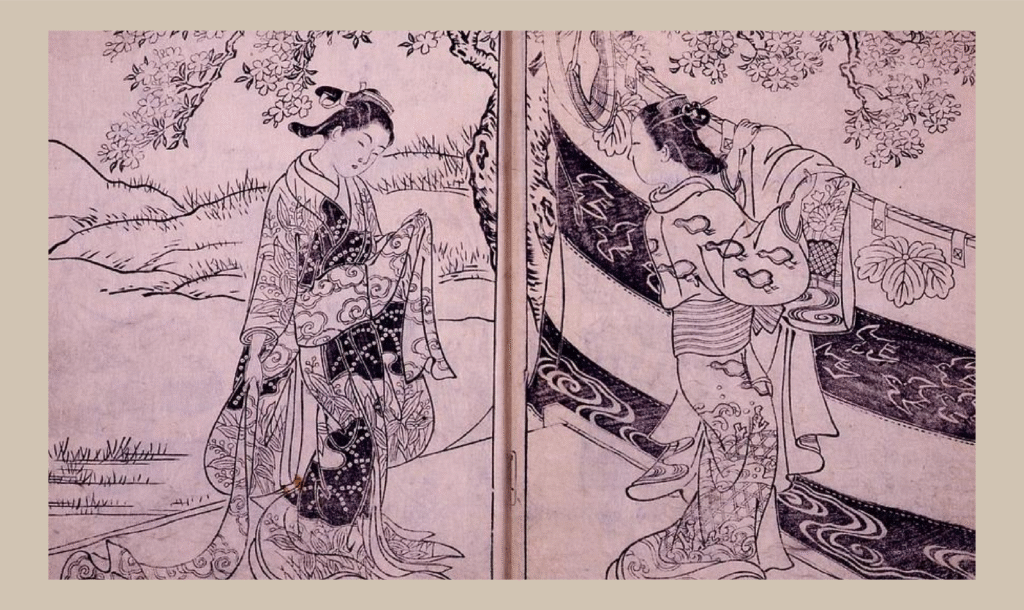
Fashion in Edo-period Japan was governed by strict seasonal guidelines and social codes:
- Seasonality: It was common to wear kimono adorned with motifs appropriate to the season. For example, cherry blossoms (sakura) in spring, waves and water motifs in summer, and maple leaves (momiji) in autumn.
- Color Symbolism: Certain colors carried layered meanings. Indigo blue (ai) was popular among the commoners, while deep purples and crimson reds were reserved for the aristocracy or special occasions.
- Status and Regulation: The government implemented sumptuary laws (kinyari hō) to regulate ostentatious displays among merchants. However, fashionistas circumvented these rules by embedding luxurious artistry into the hidden linings or subtle details of their kimono.
Thus, Edo-period kimono fashion was a delicate dance between personal expression, social expectation, and clever subversion.
The Role of Ukiyo-e in Spreading Kimono Trends

One of the most fascinating aspects of Edo-period fashion culture is its relationship with ukiyo-e (浮世絵) prints.
Popular ukiyo-e artists such as Kitagawa Utamaro and Torii Kiyonaga often depicted the latest kimono styles worn by courtesans and kabuki actors. These images functioned much like today’s fashion magazines, spreading trends across cities like Edo (Tokyo), Kyoto, and Osaka.
By examining preserved ukiyo-e prints, we can trace how patterns evolved, how motifs gained popularity, and how urban citizens engaged with seasonal and social aesthetics.
This is why resources like the Ukiyo-e Pattern Free Download are so invaluable—they provide direct insight into historical fashion beyond written records.
The Enduring Legacy of Edo Kimono
Even today, Edo-period kimono influence modern Japanese fashion and global design sensibilities:
- Designers such as Issey Miyake and Yohji Yamamoto often cite traditional kimono structure and patterns as key inspirations.
- Contemporary textile artists continue to reinterpret traditional motifs with modern aesthetics.
- Global appreciation for Japanese minimalism and nature-inspired design owes much to the visual language first perfected during the Edo period.
Understanding Edo-period kimono patterns unlocks not only aesthetic pleasure but also profound insights into history, society, and human creativity.
Discover the Floating World Through Edo Kimono
Kimono from the Edo period are much more than clothing—they are historical documents, coded messages, and living works of art.
If you wish to explore authentic Edo-era designs firsthand, don’t miss our detailed article introducing the Ukiyo-e Pattern Free Download—a treasure trove of 240 historic patterns waiting for you to discover.
Thank you!

